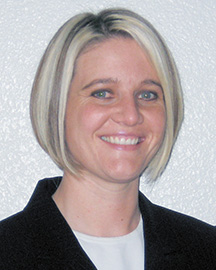 Futures For You
Futures For YouQ&A
 Futures For You
Futures For YouInside The Futures World
Want to find out how the futures markets really work? Carley Garner is the senior strategist for DeCarley Trading, a division of Zaner Group, where she also works as a broker. She authors widely distributed e-newsletters; for your free subscription, visit www.DeCarleyTrading.com. Her books, Currency Trading in the Forex and Futures Markets, A Trader’s First Book on Commodities, and Commodity Options, were published by FT Press. To submit a question, post your question at https://Message-Boards.Traders.com. Answers will be posted there, and selected questions will appear in a future issue of S&C.
FOCUS ON ONE MARKET OR SEVERAL?
Should I focus on one market, or scan several markets for opportunities?
The answer to this question largely depends on the strategy used and the time frame you are trading in. For instance, a daytrader is likely to have developed specific technical trading guidelines to trigger entry and exit signals. However, not all markets are created equally — and what works in one may not work in another.
Accordingly, to daytrade multiple markets it might be necessary to implement slightly different trading parameters for each symbol traded. In addition, it can often be difficult to follow multiple markets on short time frames. Unlike position traders, the difference between profit and loss for a daytrader can be a few short minutes, or even seconds. On the other hand, a position trader, particularly an option trader, would likely find an advantage in the ability to diversify his speculations among multiple markets. Unlike daytraders, position traders have the luxury of having ample reaction time and less hands-on monitoring. Therefore, a position trader can likely monitor a handful of markets simultaneously.
Although it is clear that personality, natural talent, and the ability to focus all play a part in whether a trader can be successful across multiple asset classes, as a rule of thumb, daytraders should limit themselves to a couple of markets. Position traders, on the other hand, should consider any liquid commodity market fair game. Obviously, the term liquid is ambiguous, but the idea is that you should refrain from trading option markets with wide bid-ask spreads such as lumber and copper. Likewise, futures markets that see daily volume below about 30,000 should be traded sparingly.
In such futures markets, overcoming the spread between the bid and ask typically won’t be an issue, but experiencing true and fair price action will be. Illiquid futures contracts often experience massive price squeezes for little or no fundamental reason.
IS REALISM OVERRATED?
How can I practice trading in a realistic environment?
Anyone who has risked his hard-earned money in the markets knows that trading is a game of mental stability, not necessarily intelligence, or even skill. Most traders enjoy massive success in a paper trading account but fail to convert their experience into profitable live trading. Accordingly, paper trading for long periods of time (months or years) isn’t as helpful as many assume it to be.
Analysis, research, and intuition are only part of the battle. There is a big difference between accurate price speculation and making money!In my opinion, traders are better served opening a small account to trade ultra-low margined futures such as mini grain futures, e-micro metals, or e-micro currencies. Doing so gives traders all the benefits of paper trading with at least some indication about how emotions play a part in decision making. Naturally, it isn’t nearly as stressful to trade a product that makes or loses $1.25 per tick as it is one that is worth $12.50, but doing so will give you a taste of what’s in store — an emotional roller-coaster.
In time, traders can graduate from speculating in a single e-micro to multiple contracts, eventually working up to full-sized futures contracts. This seems to make more sense than attempting to jump right into high-risk contracts simply because of success achieved in what can be viewed as nothing more than an entertaining video game on paper (that is, a paper trading account).
The concept of trading psychology shouldn’t be overlooked; the most important factor in profitable trading is managing emotions. The best technical analysis and most in-depth fundamental research will never be enough to overcome the burden of poorly timed panic or overzealous trading. Analysis, research, and intuition are only part of the battle. There is a big difference between accurate price speculation and making money!